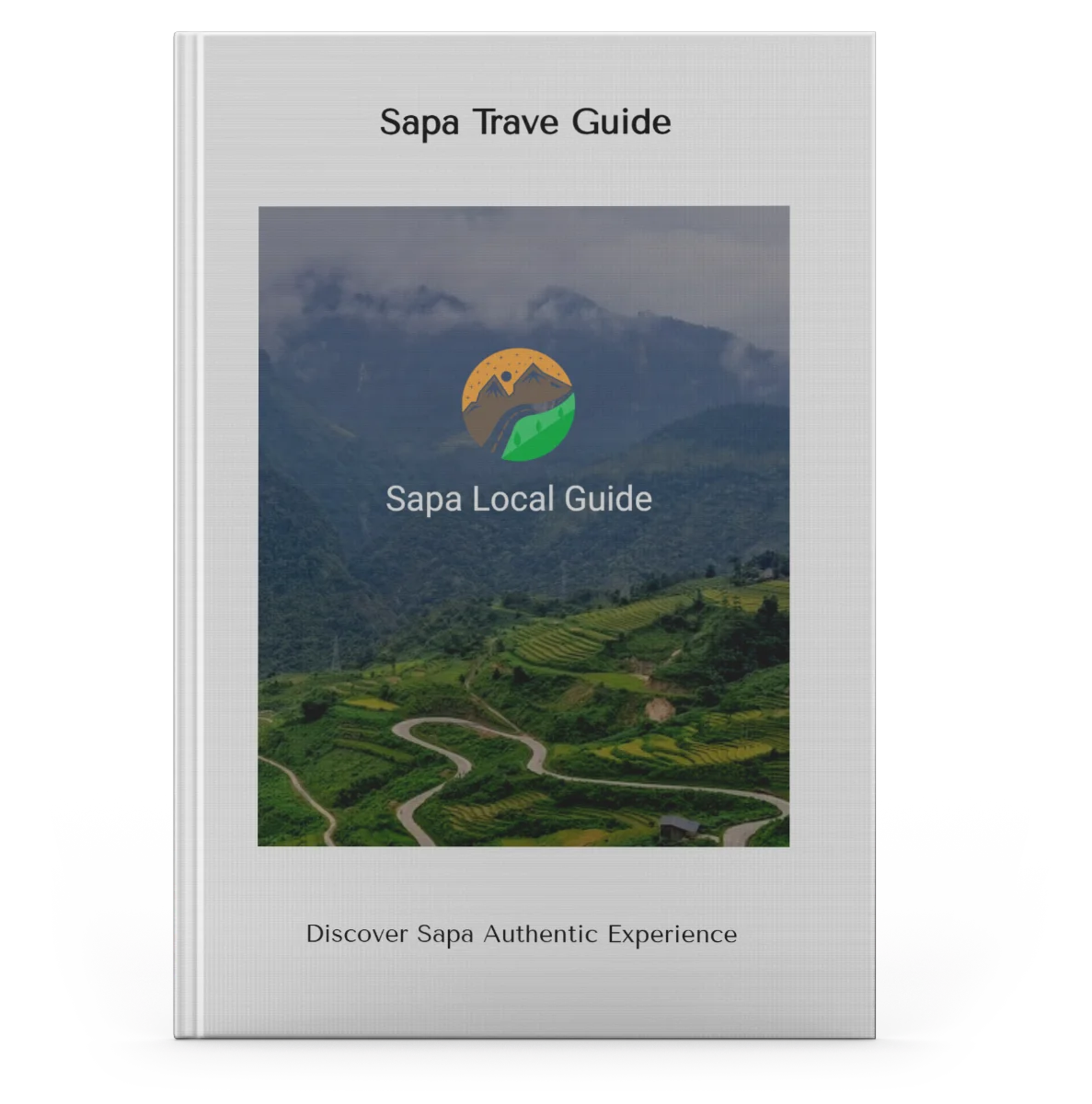![]()
Authentic Experience of Sapa
Enjoy breathtaking mountain views and explore local villages on an authentic trekking journey through the stunning landscapes of Sapa, Vietnam.

Imagine standing atop a mountain, where the clouds cradle the peaks like a gentle embrace. In Sapa, you’ll find more than just stunning vistas; you’ll uncover the rich tapestry of village life. As you trek through vibrant rice terraces, the stories and traditions of the Black Hmong and Tay people await. What experiences will unfold as you connect with these communities and savor their culture?
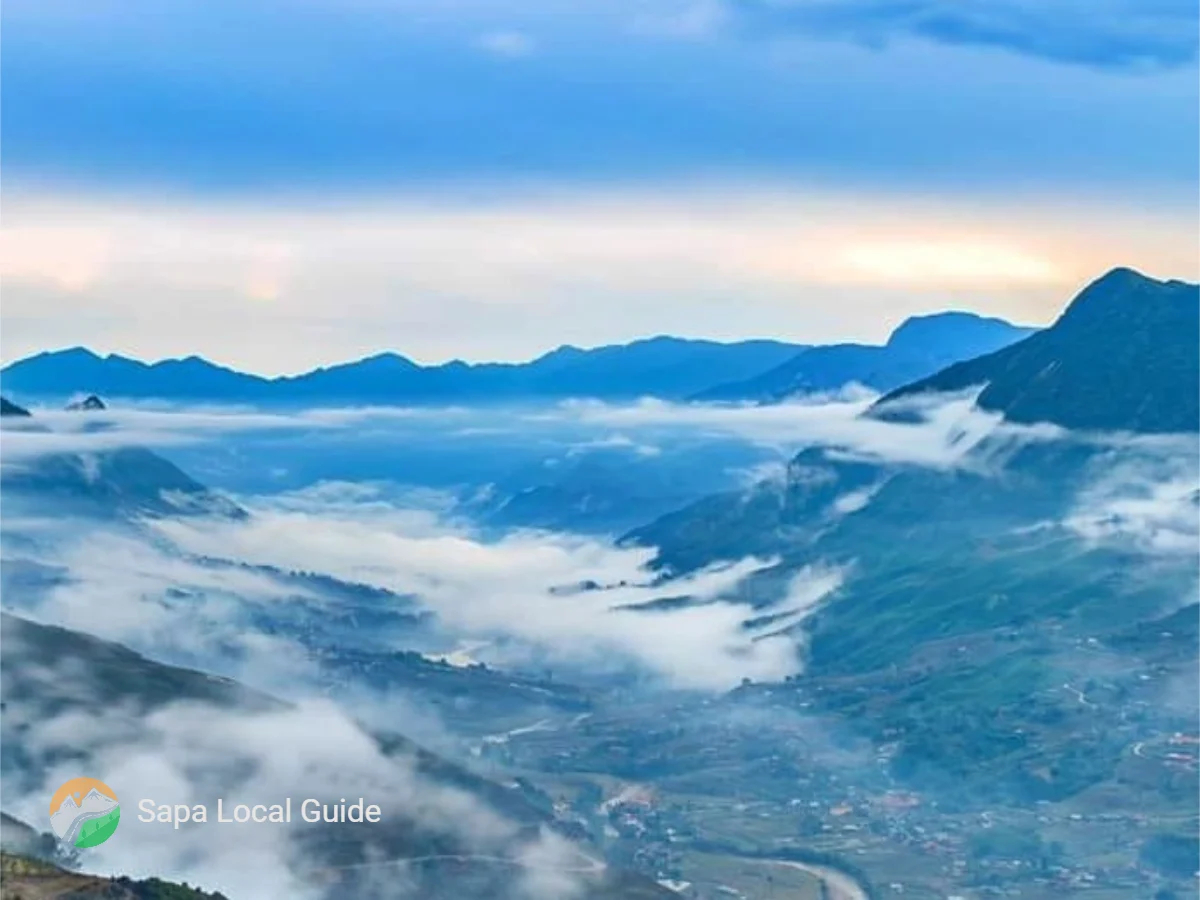
Key Takeaways
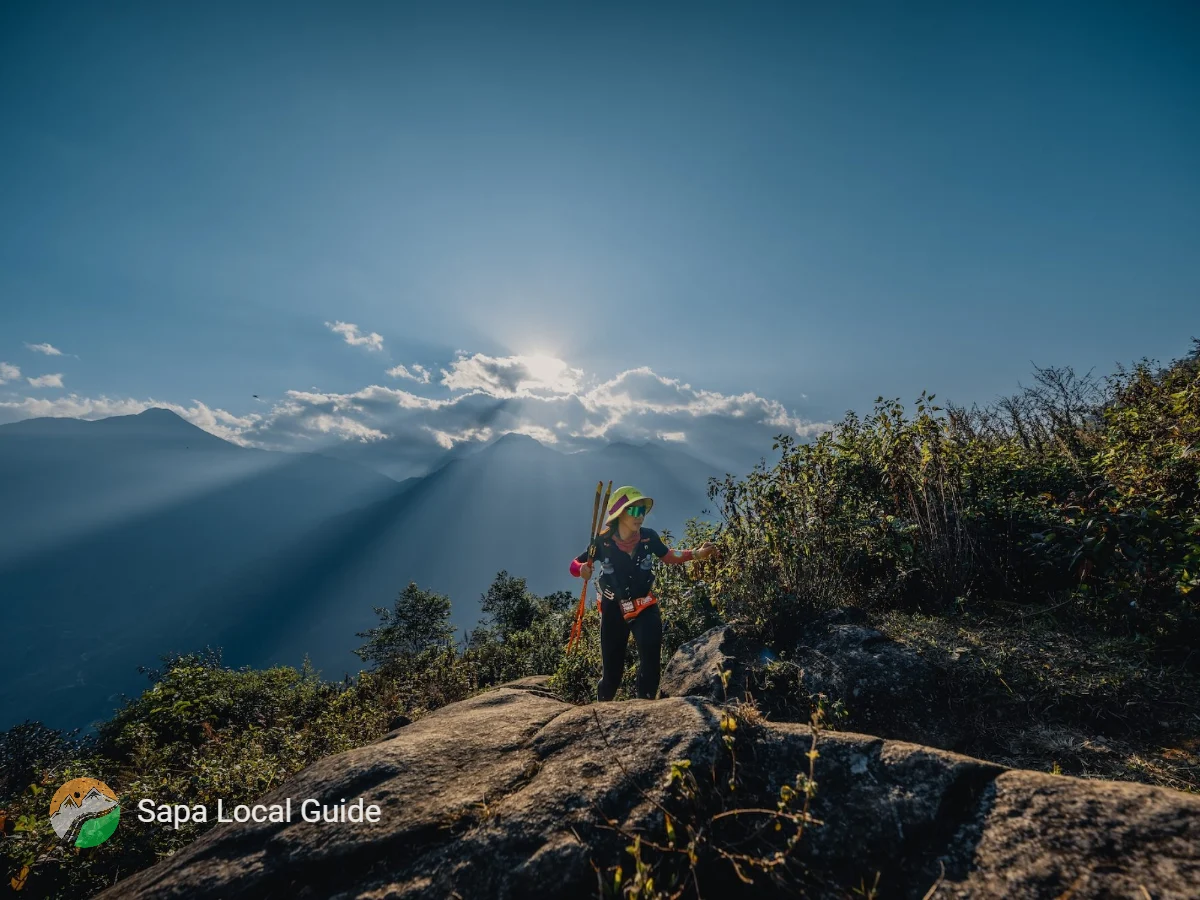
To reach Sapa and kickstart your authentic trekking experience, you’ll want to plan your journey carefully.
Begin by booking a bus or train from Hanoi to Sapa; both options offer breathtaking views along the way.
Once you arrive, immerse yourself in the vibrant local culture and prepare for thrilling adventures.
Consider staying in a homestay to enhance your village authentic experience trekking in Sapa. You'll connect with locals and gain insights into their daily lives.
Don't forget to pack essentials like sturdy shoes and a good camera for capturing those picturesque landscapes.
If you’re starting your journey in Hanoi, there are two popular ways to reach Sapa: traveling by bus or taking the overnight train. Each method offers a different kind of experience, and the best choice depends on your preferences for comfort, cost, and scenery.
Tip: If you're seeking adventure from the start, go with the train. If you're more focused on getting there quickly and affordably, the bus is your best bet.

For a truly authentic village experience, consider staying in a traditional homestay instead of a hotel in Sapa town. Many of the region’s ethnic minority families open their homes to visitors, giving you the chance to experience daily life in a Hmong, Dao, or Tay village.
Here’s what makes a homestay special:
Choosing a homestay supports local families and gives you a deeper connection to the landscape and people. It turns your trek into a personal story, not just a sightseeing tour.
To make the most of your trekking experience in Sapa, packing the right gear is essential. Weather in the mountains can be unpredictable, and the terrain can range from gentle village paths to steep, muddy trails.
Here’s a basic list of what to pack:
With the right preparation, your trek won’t just be easier—it’ll be more enjoyable and safe. Sapa’s trails are full of beauty, but they reward travelers who come prepared.
Sapa 1 Day

1 day experience,Rice fields, valley, villages. Moderate to challenging, Private,Vegan-friendlyCultural immersion & active adventure
Motorbike Tour

1 day experience,Rice fields,waterfall.Challenging,Private tours friendly Cultural immersion, active adventure
Sapa 2 Days

2 days 1 night experience. Moderate to challenging, adventure. Mountains, valleys, rice fields and villages. Vegan-friendly
Sapa 3 Days

3 days 2 night experienc, Moderate to challenging. Mountains, valley, rice fields & villages. Private tours. Vegan-friendly
When's the best time to soak in the breathtaking mountain views and enjoy village trekking in Sapa? The ideal months are from September to November and March to May.
During these periods, you’ll witness clear skies and vibrant landscapes, perfect for capturing stunning photos. In September, the rice terraces are a golden hue, while spring brings lush greenery and blooming flowers.
Experience clear skies and vibrant landscapes, with golden rice terraces in September and blooming flowers in spring. Perfect for stunning photos!
Avoid the rainy season from June to August, as muddy trails can dampen your adventurous spirit.
Winter, from December to February, offers a unique charm with cool weather, but visibility can be limited.
From September to November, Sapa transforms into a golden paradise. This is the best time to enjoy breathtaking mountain views and village trekking. The skies are clear, the air is crisp, and the rice terraces glow in vibrant shades of gold. It's harvest season, when local ethnic communities are working on the land, offering travelers a glimpse into their daily life and culture.
Trekking through villages like Lao Chai, Ta Van, and Y Linh Ho during autumn feels like walking through a painting. The trails are dry and easy to navigate, making it ideal for both beginners and experienced trekkers. Along the way, you’ll pass through cornfields, bamboo forests, and peaceful streams. This is also a great time for photography enthusiasts. The light is warm, and the views stretch for miles across the Hoàng Liên Son mountain range.
If you're seeking an authentic experience trekking in Sapa, autumn is when the region’s charm is at its peak. You’ll meet friendly locals, visit traditional stilt houses, and enjoy fresh produce from the harvest. The cool weather keeps you comfortable as you trek, and the overall experience is both rewarding and culturally rich.
Tip: Book your homestay early, as autumn is peak trekking season in Sapa.
Spring in Sapa brings new life to the mountains. From March to May, the weather is mild, the skies are mostly clear, and the valleys come alive with blooming flowers and green rice terraces. This season is perfect for those looking for a refreshing and authentic experience trekking through colorful villages.

During spring, you can witness nature waking up after a long winter. Peach blossoms, plum flowers, and wild orchids add splashes of pink, white, and purple to the hills. Trekking during this time offers a different kind of beauty — instead of golden fields, you walk through fresh greenery and blossoming landscapes. It's peaceful, serene, and deeply rejuvenating.
This season is also rich in culture. Many local festivals, such as the Gau Tao Festival of the Hmong people or the Roóng Poọc Festival of the Giay, take place in spring. Travelers can combine trekking with attending these events for a deeper connection with the local communities. Spring in Sapa is not just about nature — it's about celebrating life with the people who call these mountains home.
Tip: Wear layers. Mornings and evenings can be chilly, but afternoons are pleasantly warm — ideal for trekking.
While Sapa offers stunning scenery year-round, not every season is ideal for trekking. From June to August, the region enters its rainy season. Heavy rains can turn mountain trails into slippery and muddy paths, making trekking challenging and sometimes unsafe. Even if you’re an experienced trekker, the limited visibility and wet weather can take away from the authentic experience trekking in Sapa.
Besides the rain, landslides may occur in remote areas, and leeches or mosquitoes can become more prevalent in dense forests. Additionally, cloudy skies and constant drizzle may block the panoramic views you came to see. That’s why this season is best avoided for serious trekking adventures.
Winter, from December to February, offers a unique experience — especially if you love cold weather and are curious about Sapa’s frost-covered villages. However, fog often rolls in, reducing visibility. This can make it hard to appreciate the grand mountain scenery. While you can still enjoy short walks and cultural visits, long treks might feel less rewarding.
If you’re planning a trip focused on mountain views and village trekking, it's better to avoid these months. Choose autumn or spring instead for a safer, more immersive journey filled with beautiful scenery and memorable cultural encounters.
Tip: Always check the weather forecast before starting your trek. Hiring a local guide ensures safety and enhances your journey.
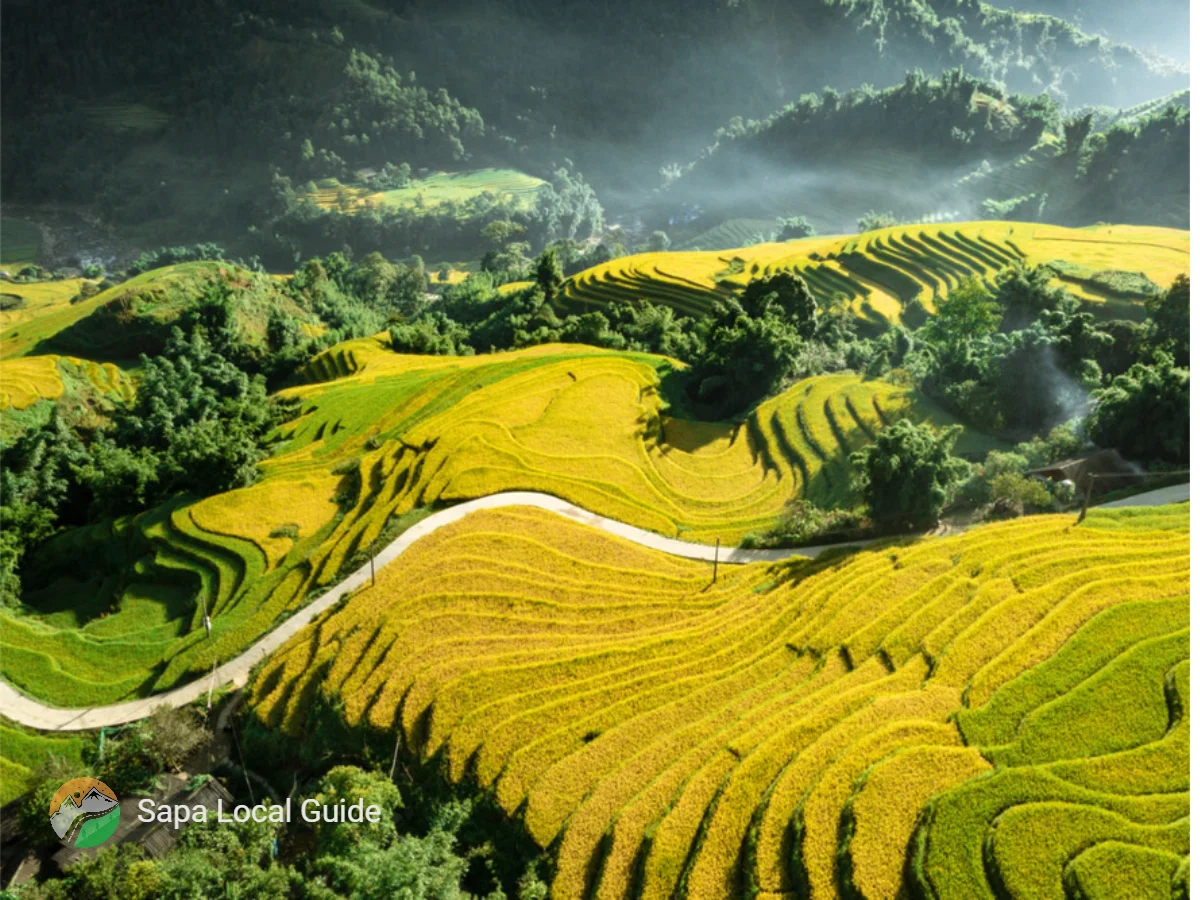
While exploring Sapa's stunning landscapes, you’ll want to discover the top routes for an authentic village trekking experience. Each path leads you through picturesque valleys and vibrant cultures.
Here are four must-try routes:
These routes not only provide adventure but also a chance to engage with local life, ensuring your trek is both memorable and fulfilling.
Get ready to embrace the freedom of Sapa!
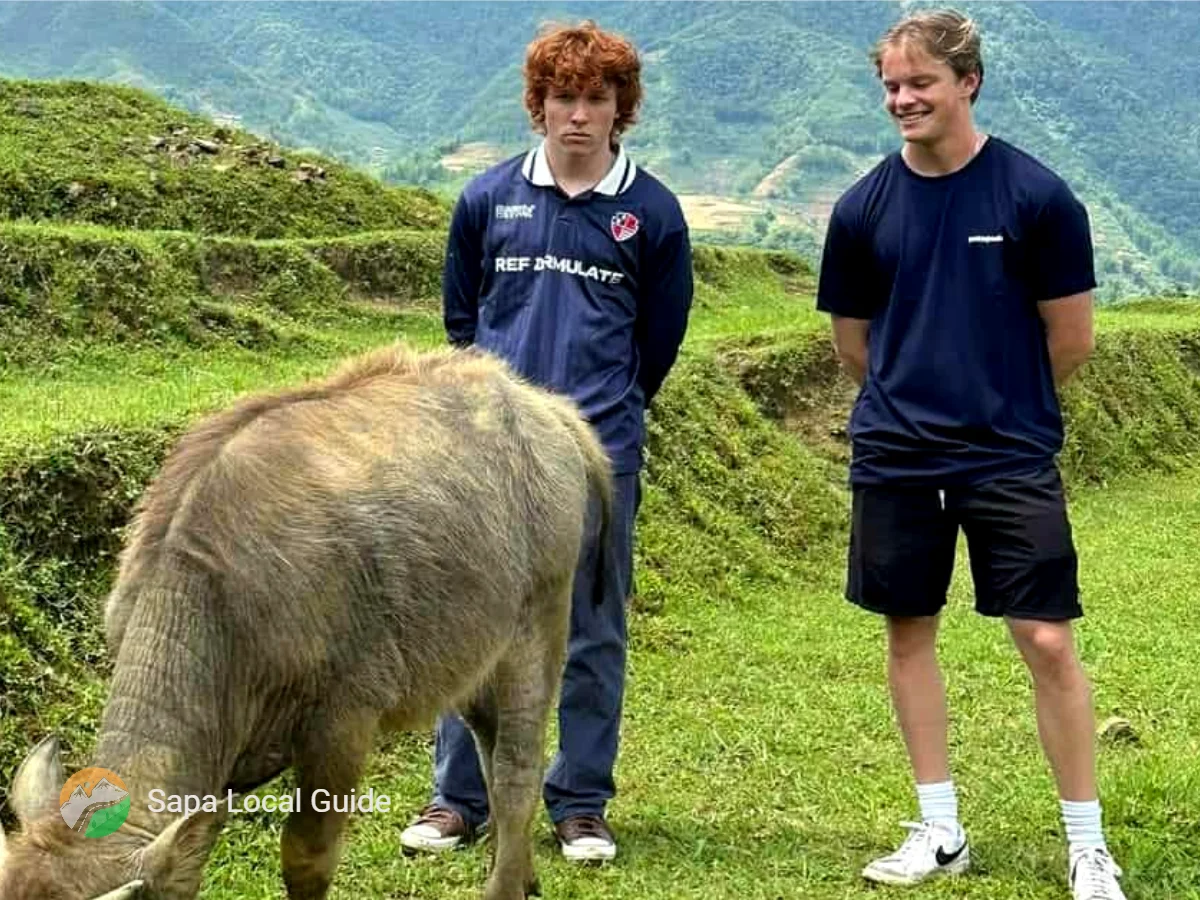
If you're seeking an authentic experience trekking in Sapa, the trail to Cat Cat Village is the perfect place to begin. Just a short walk from Sapa town, this route is ideal for beginners who want to explore Hmong culture without venturing too far.
As you begin your trekking journey, you'll descend into a peaceful valley lined with lush green hills and fresh mountain air. The path is paved and easy to follow, making it accessible for travelers of all ages. Along the way, you'll pass by traditional wooden houses, handmade textile shops, and even local blacksmiths who continue ancient trades.
What makes Cat Cat unique is its authentic connection to the Hmong people. You'll have the chance to witness traditional dances, learn about hemp weaving techniques, and taste local dishes like corn wine or sticky rice in bamboo. The village also boasts a beautiful waterfall, where locals once used wooden water wheels to irrigate their rice terraces.
Whether you're interested in photography, culture, or just want to breathe in nature, this trek delivers a balanced mix of tradition and natural beauty. Cat Cat is more than a village—it’s a living story of how tradition survives in a modernizing world.
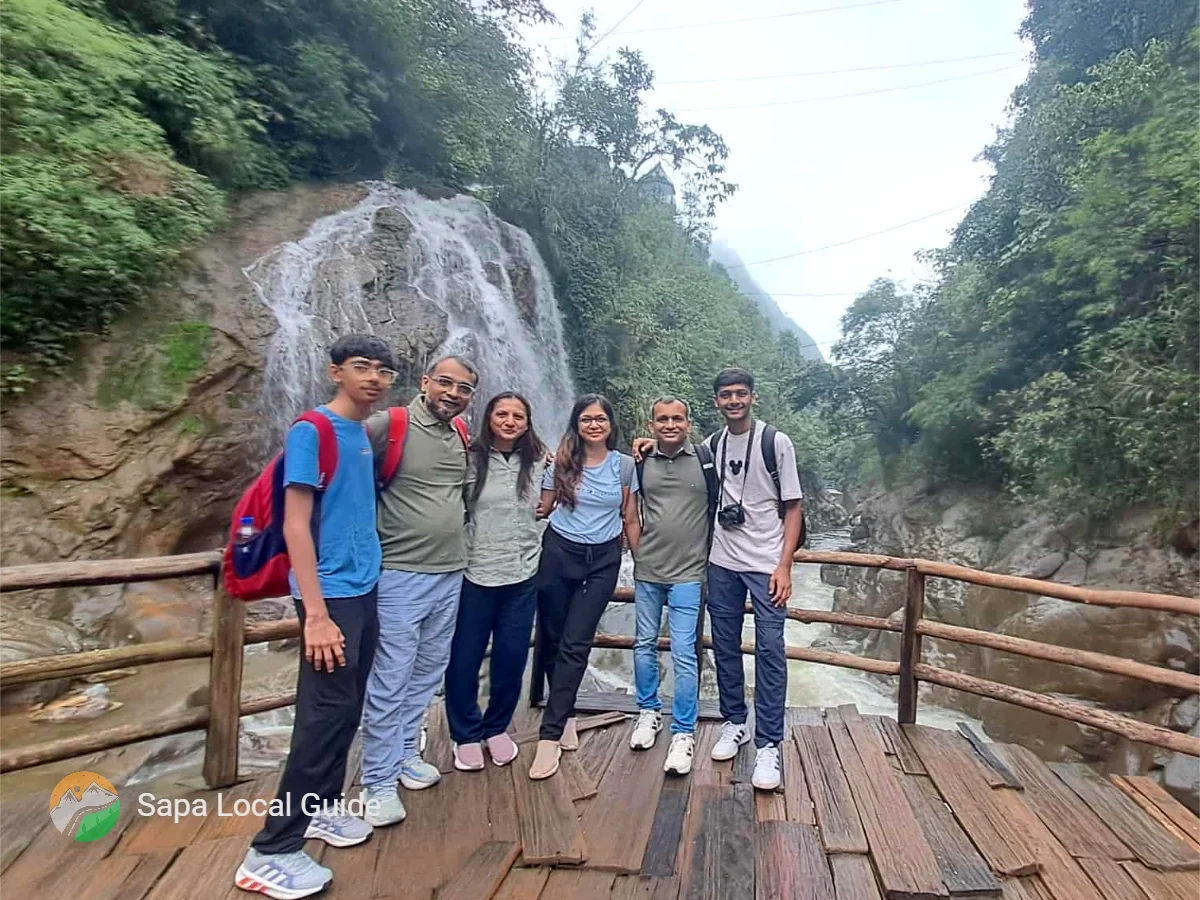
A favorite among trekkers, Ta Van Village is a peaceful retreat nestled deep in Muong Hoa Valley. This route is ideal for those seeking a longer, more immersive authentic experience trekking adventure.
The path to Ta Van takes you through rice terraces, bamboo forests, and suspension bridges that cross gentle mountain streams. The trekking in Sapa route is moderately challenging, making it perfect for travelers who want to stay active while soaking in the serene landscapes. You’ll encounter local farmers tending their rice paddies and water buffalo wandering through the fields.
Ta Van is home to the Giay ethnic minority, known for their harmony with nature and traditional lifestyles. During your visit, you can see handmade crafts like embroidered scarves, blankets, and bamboo products. Many families welcome visitors into their homes, giving you the chance to enjoy a meal, sip herbal tea, or even stay overnight in a homestay.
What sets Ta Van apart is its quiet charm. It offers a slower pace, allowing you to fully connect with the rhythm of village life. For a real authentic experience, nothing beats waking up to misty rice fields and the sound of roosters echoing through the valley.
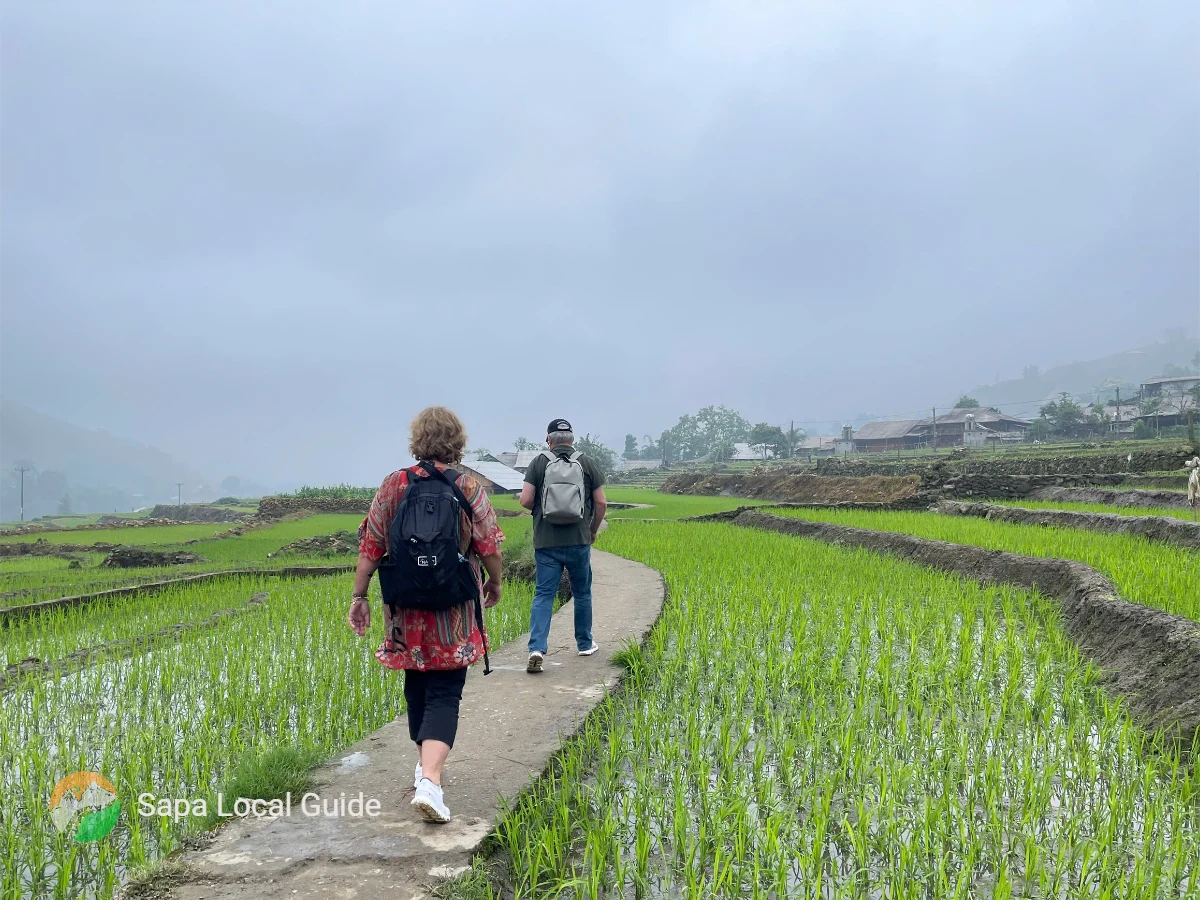
For those who want deeper cultural immersion, Lao Chai Village provides an unforgettable authentic experience trekking opportunity. The trek begins from Sapa town and winds downhill through forest paths, across rice terraces, and over small streams, eventually leading to a wide open valley surrounded by towering peaks.
The Black Hmong people are the heart and soul of Lao Chai. Known for their dark indigo clothing and silver jewelry, they are welcoming and proud of their traditions. As you pass through their village, you'll find women weaving, men crafting tools, and children laughing as they herd animals.
This trekking in Sapa route offers incredible mountain views—perfect for photography enthusiasts. You'll also have a chance to witness how traditional rice farming coexists with modern homestays and sustainable tourism. Many travelers choose to spend the night here, giving them more time to connect with the villagers and their way of life.
The combination of majestic landscapes and rich culture makes Lao Chai one of the most memorable trekking experiences in the Sapa region. Every step on this trail tells a story of resilience, beauty, and connection.

For adventurers who want to go beyond the usual paths, Ban Ho Village offers a quiet and enriching authentic experience trekking route. Located deeper in the valley, this trail takes you through thick forests, hanging bridges, and along clear rivers.
The trek to Ban Ho is slightly more challenging but incredibly rewarding. The peaceful sounds of nature—chirping birds, rustling leaves, and flowing water—create a calm atmosphere throughout the journey. As you arrive, you’ll be greeted by the Tay ethnic group, who live in stilt houses and have a unique way of life shaped by the rivers and forests around them.
Ban Ho is less crowded than Cat Cat or Ta Van, which means you’ll have more time and space to connect with nature and people. You can swim in natural hot springs, join a local cooking session, or take a quiet walk through the rice fields at sunset.
This trekking in Sapa route is perfect for travelers looking for something real and untouched. Ban Ho teaches you that the most beautiful moments often come from the simplest experiences—sharing a meal with a Tay family or listening to a traditional song by the fire.

Whether you choose the lively traditions of Cat Cat, the peaceful rice fields of Ta Van, the cultural richness of Lao Chai, or the tranquil escape of Ban Ho, each route promises a meaningful and authentic experience trekking through Sapa’s enchanting villages.
Let the winding trails, friendly smiles, and mist-covered valleys remind you why trekking in Sapa is more than just a walk—it’s a journey into the heart of Vietnam’s cultural soul.
After exploring Sapa's breathtaking trekking routes, finding the right place to stay can enhance your authentic experience. Look for accommodations that reflect the local culture and offer a homey feel. Here’s a handy table to help you choose:
| Accommodation Type | Features |
|---|---|
| Homestays | Live with local families, enjoy traditional meals |
| Boutique Hotels | Unique decor, personalized service, stunning views |
| Guesthouses | Affordable, cozy atmosphere, local insights |
| Eco-lodges | Sustainable practices, nature immersion, quiet settings |
| Traditional Stilt Houses | Authentic architecture, cultural connection, scenic surroundings |
Each option provides a different flavor of Sapa, so you can dive deeper into the local lifestyle while enjoying your freedom to explore. Choose what resonates with you!
If you're seeking a genuine connection with Sapa's ethnic communities, homestays are the top choice. Staying with a local family means more than just a bed — it's about sharing meals, stories, and traditions that have been passed down for generations. This immersive experience allows you to witness daily life in the mountains and gain a deeper understanding of their culture. After a day of trekking in Sapa, coming home to a warm meal and local hospitality enhances your authentic experience. Whether you're in Lao Chai, Ta Van, or Ban Ho, each village homestay offers a unique perspective on mountain life.
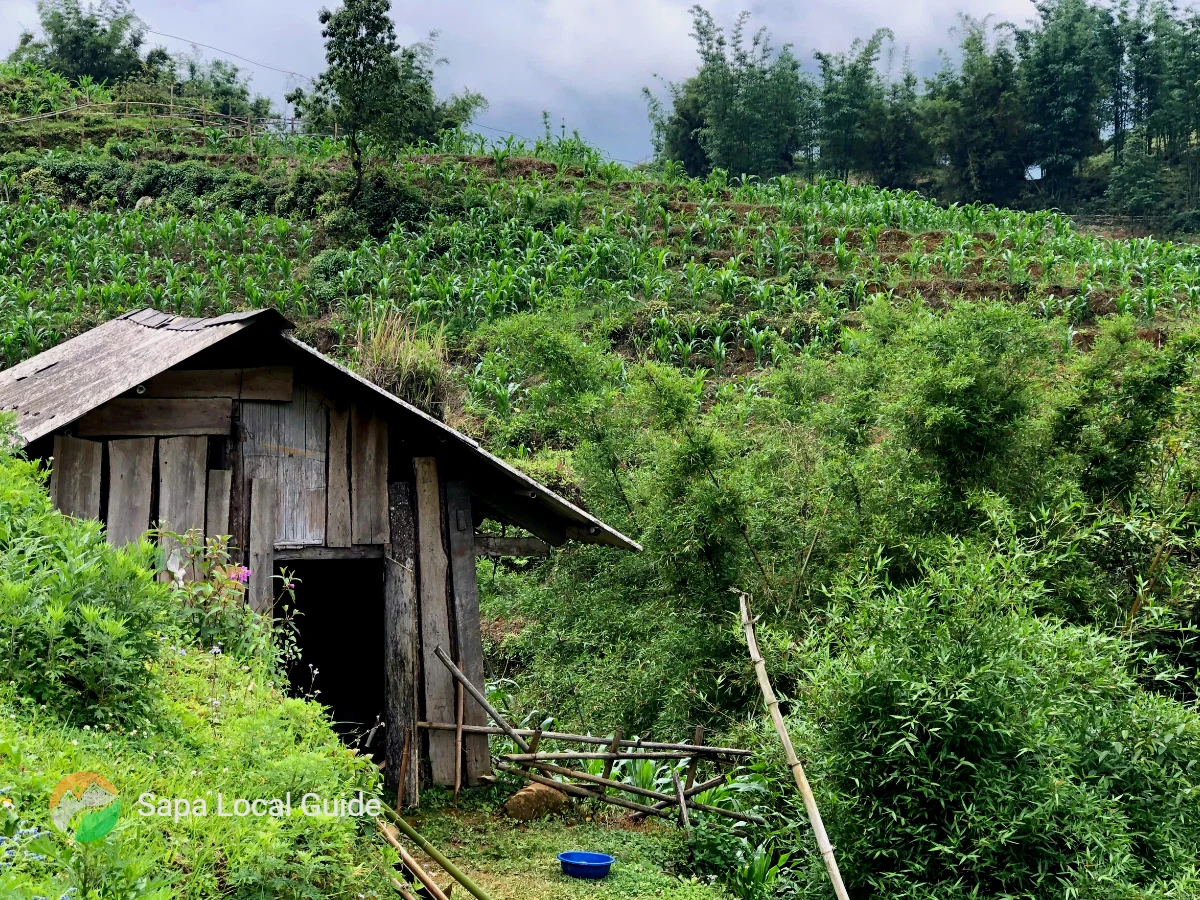
For those who prefer stylish comfort without sacrificing local flavor, boutique hotels in Sapa offer a perfect blend. These small, thoughtfully designed hotels often showcase ethnic patterns, hand-crafted decor, and panoramic views of rice terraces. You’ll still feel close to nature while enjoying a more refined setting. Many boutique hotels offer guided trekking tours, cooking classes, and cultural activities, which means you can enjoy an authentic experience trekking through the hills without giving up the comforts of modern living. It's ideal for travelers who want authenticity with a touch of luxury.
For nature lovers, eco-lodges and traditional stilt houses provide a peaceful and eco-friendly way to stay in Sapa. These accommodations are often tucked away in remote valleys, surrounded by rice fields and forested hills. Built using sustainable materials, they reflect traditional architecture while supporting responsible tourism. You'll wake up to birdsong, fresh air, and maybe even the scent of wood smoke from a nearby Hmong home. After a long day of trekking, this serene setting helps you relax and recharge. Staying here connects you deeply with nature and culture, creating an authentic experience trekking that is both meaningful and memorable.
After an exhilarating day trekking through Sapa's stunning landscapes, you'll want to refuel with some delicious local cuisine.
Here’s what you shouldn’t miss:
Indulging in these dishes not only satisfies your hunger but also connects you to Sapa’s vibrant culinary culture.
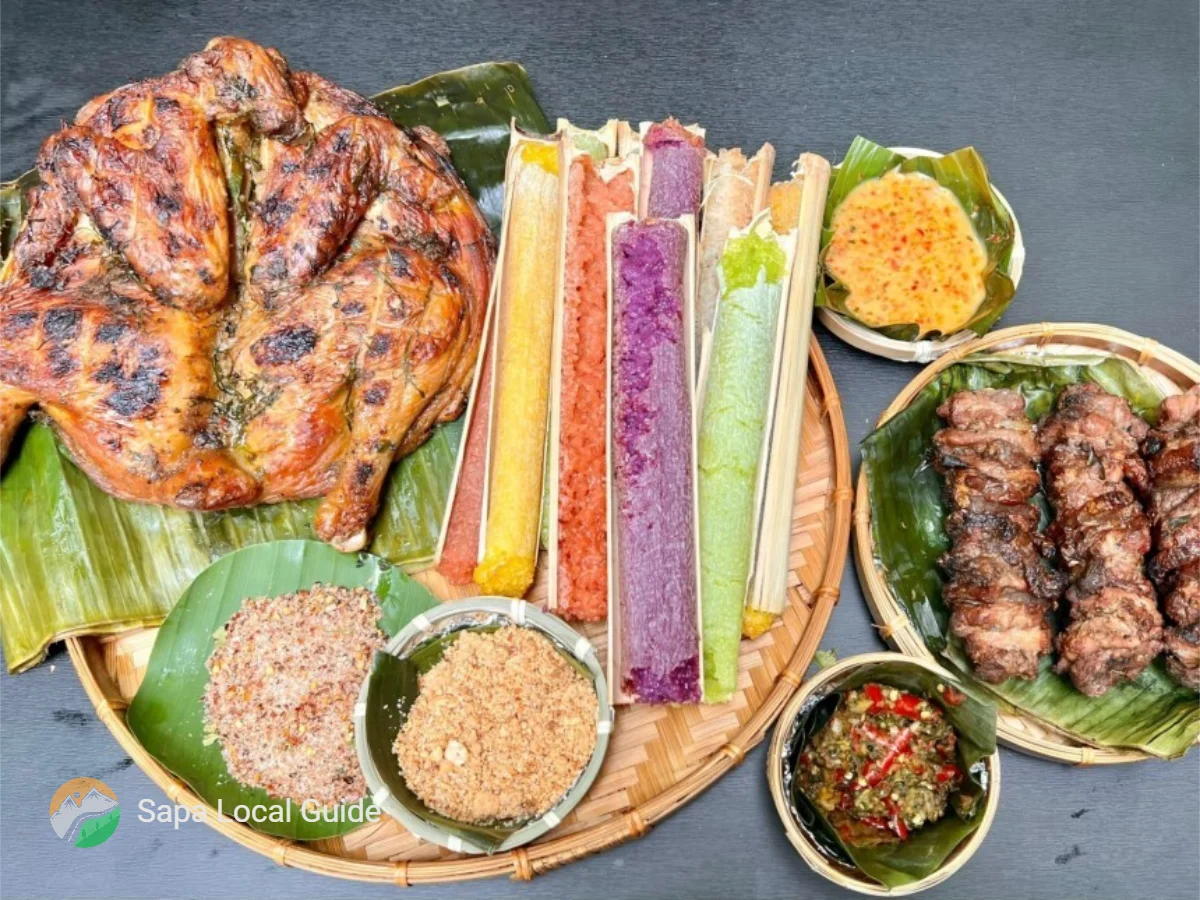
After a long day of trekking in Sapa, your body craves more than just rest—it needs real, hearty food. Local specialties are not only delicious but also offer an authentic experience of the region’s rich culture. One standout is Thang Co, a bold and flavorful horse meat stew cooked with special herbs by the Hmong people. This dish is more than just a meal—it’s a tradition served hot, perfect for the cool mountain evenings.
If you’re walking through Sapa town after your trek, follow the smoky aroma to street vendors selling BBQ skewers. These skewers of pork, chicken, or beef are grilled right in front of you and served with fresh herbs, sticky rice, and spicy dipping sauce. They’re simple, but deeply satisfying—exactly what you need after a full day of exploring rice terraces and remote villages.

After an authentic experience trekking through the hills and valleys, there’s nothing better than sitting down to a warm meal made with fresh ingredients from Sapa’s own gardens. Many family-run eateries and local markets serve Sapa vegetables—steamed, stir-fried, or mixed into hearty broths. Grown in the highland climate, these veggies are naturally sweet and full of flavor, giving you a true taste of the region.
Don’t miss the local food, especially the fragrant sticky rice varieties. Often cooked in bamboo tubes or served with grilled meats, it adds a comforting balance to your meal. For those who want to keep the authentic experience going after their trek, choose places where the locals eat. You’ll not only enjoy a satisfying meal but also share space with the people who live and breathe this mountain culture every day.
Sapa 1 Day

1 day experience,Rice fields, valley, villages. Moderate to challenging, Private,Vegan-friendlyCultural immersion & active adventure
Motorbike Tour

1 day experience,Rice fields,waterfall.Challenging,Private tours friendly Cultural immersion, active adventure
Sapa 2 Days

2 days 1 night experience. Moderate to challenging, adventure. Mountains, valleys, rice fields and villages. Vegan-friendly
Sapa 3 Days

3 days 2 night experienc, Moderate to challenging. Mountains, valley, rice fields & villages. Private tours. Vegan-friendly
As you trek through the breathtaking valleys and mountains of Sapa, you'll encounter a rich tapestry of local culture that brings the landscape to life.

You'll meet the friendly ethnic groups, like the Hmong and Dao, who share their vibrant traditions and stories. Observe their colorful clothing, hand-woven textiles, and the intricate crafts that reflect their heritage.
You’ll hear the melodies of traditional music and see lively dances during festivals, inviting you to join in the celebration.
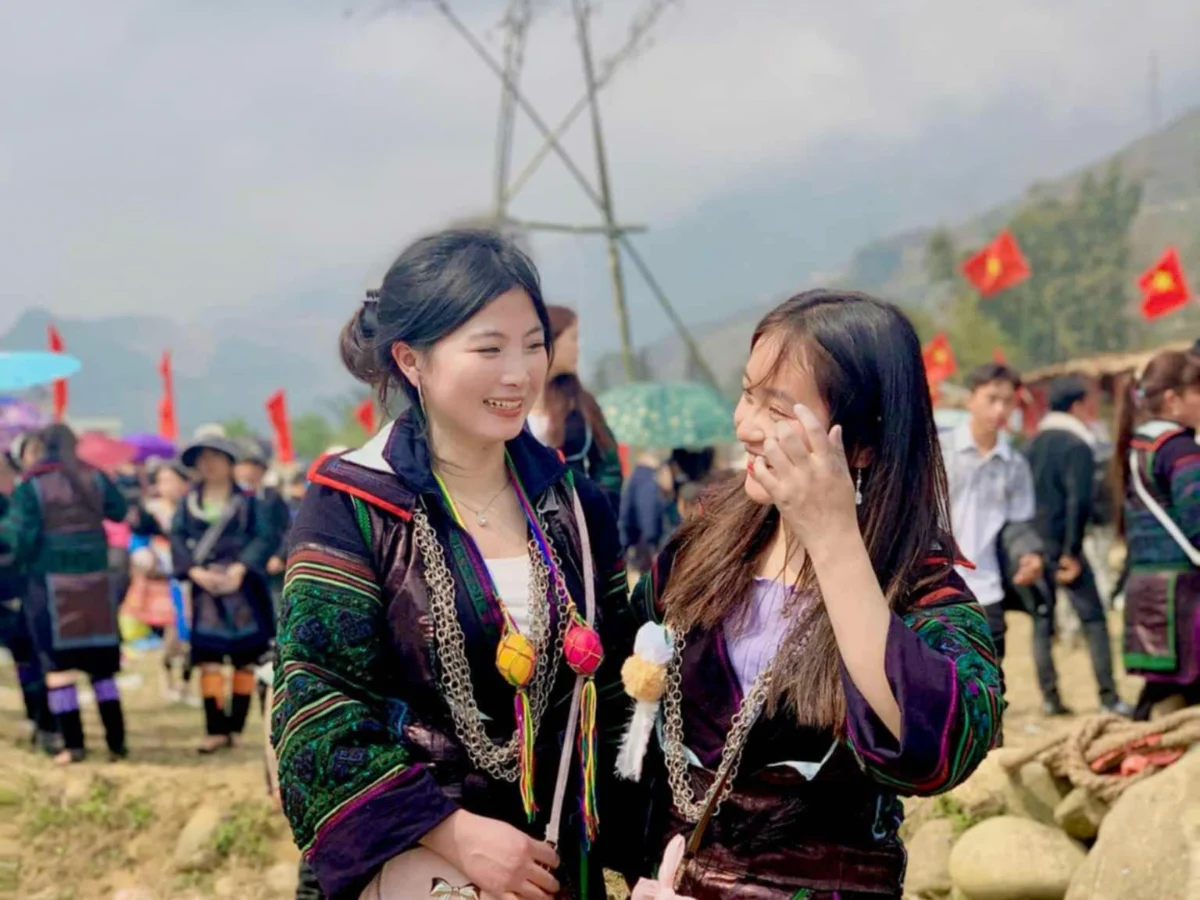
Don’t miss the opportunity to sample local customs, like tea ceremonies and rice wine tastings.
Each step unfolds a new experience, connecting you with the spirit of the land and its people, igniting your sense of adventure and appreciation for cultural diversity.
While trekking through Sapa's stunning landscapes, it's essential to prioritize your safety and well-being. Here are some tips to ensure a rewarding experience:
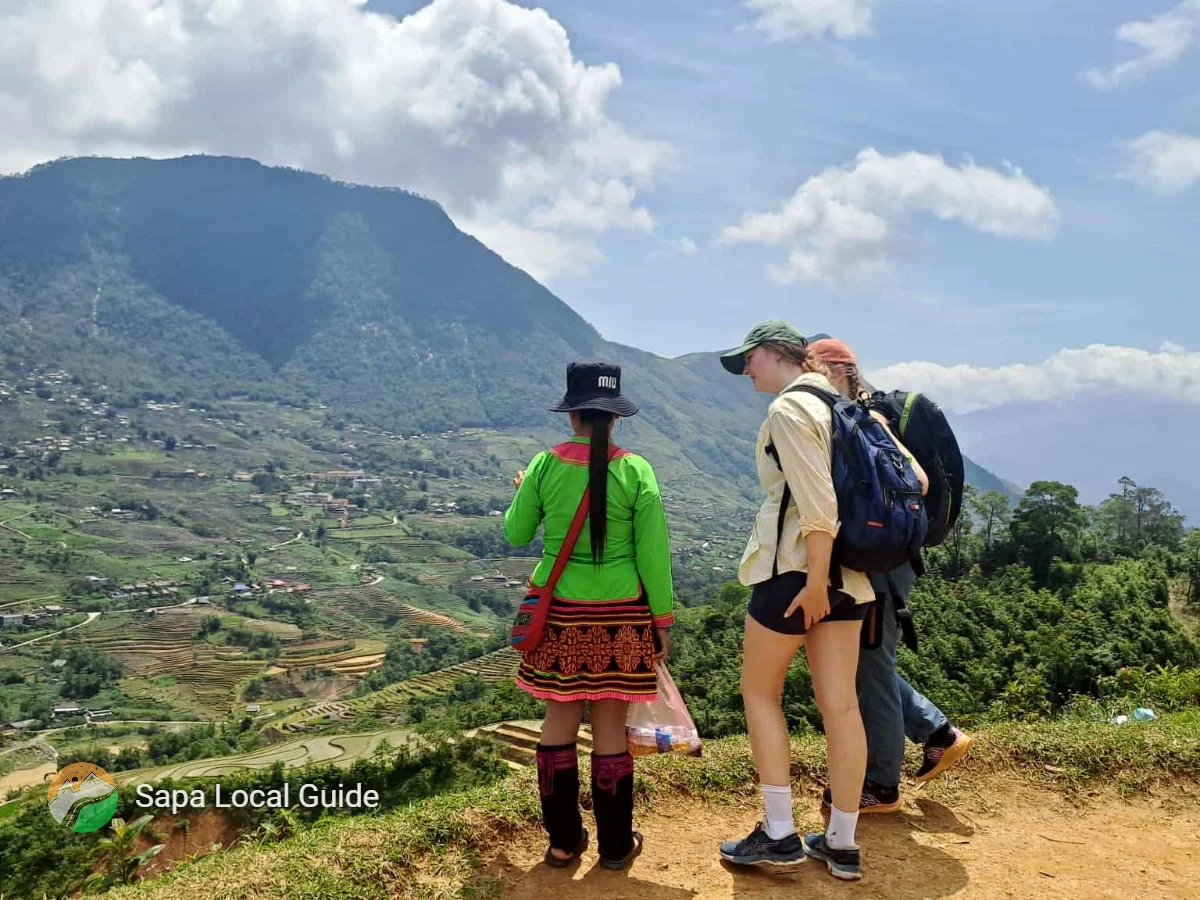
To truly experience the beauty of Sapa, you'll want to craft an itinerary that balances breathtaking mountain views with authentic encounters in local villages.
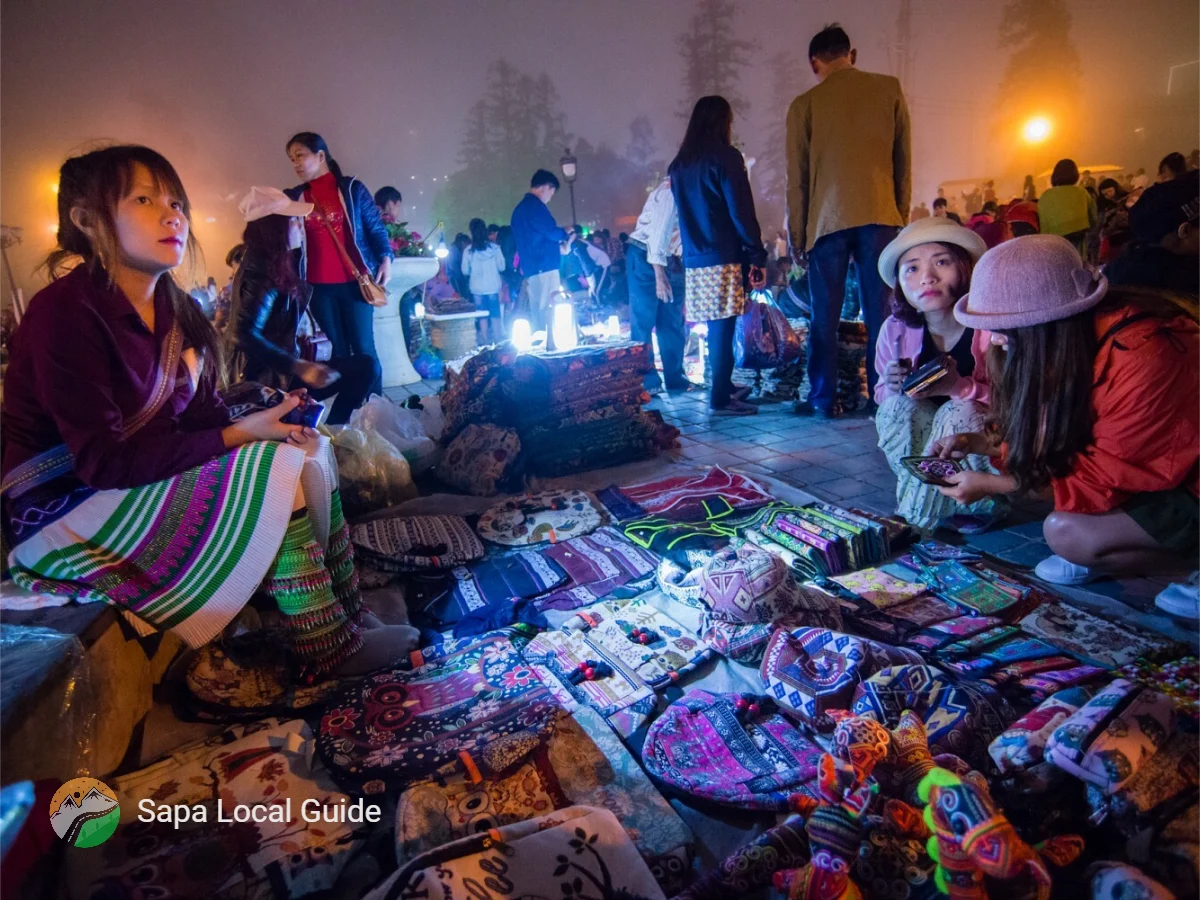
Start your day with a sunrise trek to Fansipan, Asia's highest peak, taking in the stunning panoramas. Afterward, head to the vibrant markets of Sapa town, where you can mingle with local tribes and sample traditional cuisine.
Spend the afternoon exploring the terraced rice fields in Muong Hoa Valley, soaking in nature’s artistry. In the evening, relax with a homestay, sharing stories with friendly locals.
Immerse yourself in the beauty of Muong Hoa Valley's terraced rice fields and connect with locals during a cozy homestay.
This blend of adventure and cultural immersion will leave you with unforgettable memories, connecting you deeply to Sapa's enchanting spirit. Embrace spontaneity, and let your journey unfold!
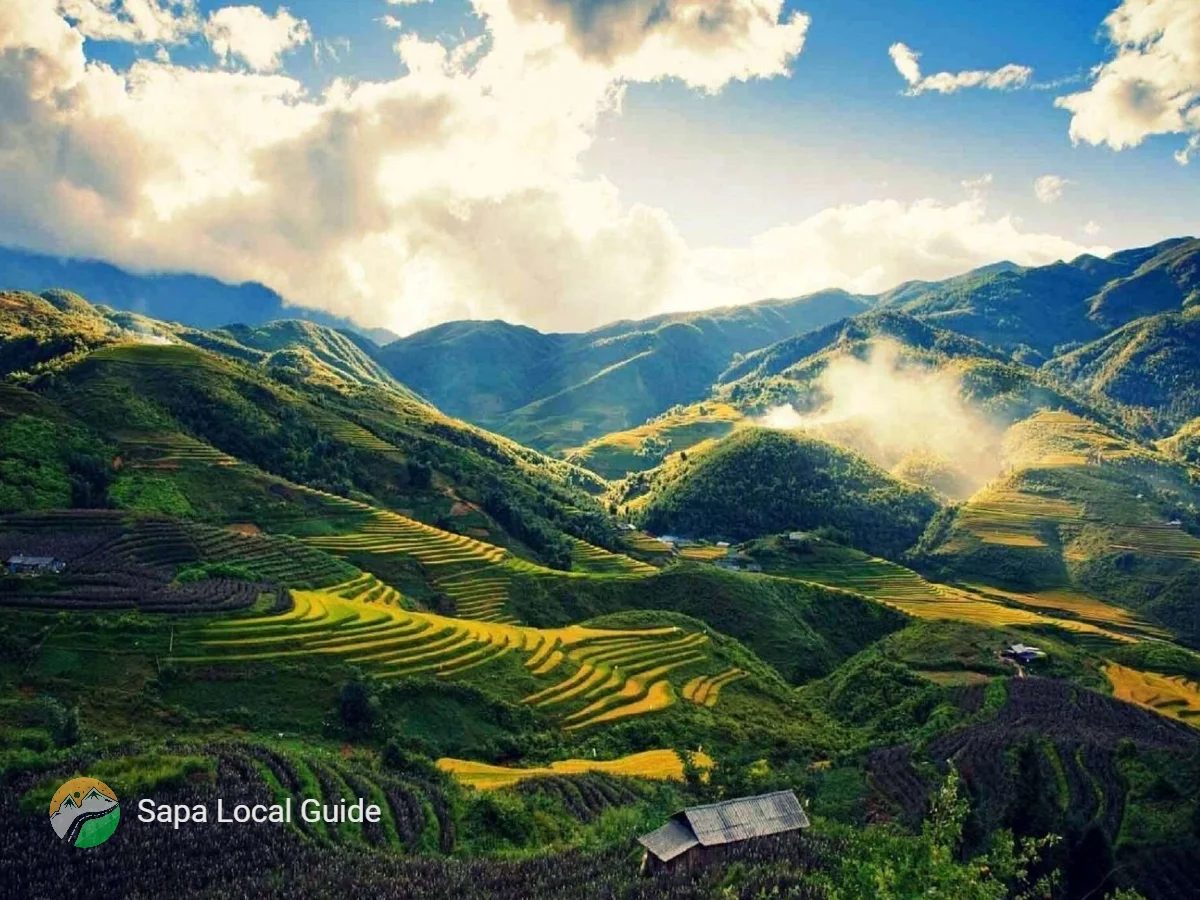
When you’re chasing adventure, pack light but smart. You’ll need sturdy shoes, breathable clothing, a raincoat, snacks, a water bottle, and a camera. Don’t forget your spirit of exploration—it's your best gear!
Yes, guided tours are available for trekking in Sapa. You can choose from various options that suit your preferences, ensuring you explore the breathtaking landscapes and local culture while enjoying the freedom of an organized adventure.
While trekking alone in Sapa might seem appealing, it's wise to consider local conditions. You’ll enjoy the freedom, but ensure you’re prepared, stay aware of your surroundings, and respect the terrain and culture. Safety first!
You won't find reliable Wi-Fi while trekking in Sapa, but you can enjoy the freedom of disconnecting. Embrace the stunning landscapes and immerse yourself in the local culture without digital distractions. You'll love it!
Sapa’s altitude soars like a majestic eagle, reaching around 1,500 meters. The trekking routes vary, offering you breathtaking views and thrilling adventures. Embrace the freedom of exploration as you wander through this stunning landscape!
As you lace up your trekking boots and set out on your adventure in Sapa, remember that the journey isn’t just about the stunning mountain views. It’s about immersing yourself in the lives of the Black Hmong and Tay people, who hold centuries of wisdom in their traditions. Engaging with their culture can transform your trek into a profound experience, challenging the theory that travel is merely escapism. Instead, it becomes a journey of connection and understanding, enriching both your spirit and mind.
Complete with itinerary, destinations, food, accommodation and tips!
